At the heart of Role Club’s East Los Angeles operation is but one man, known to a scant few as Brian Truong, but known to his fans and clients as Brian the Bootmaker.
Truong and his boots have earned a cult-like following over his 12 years in business and if you’re interested in getting a pair of Brian’s vintage-inspired, made-to-measure boots for yourself, you’re presently looking at a 2 year wait between being fitted and receiving your order. However, Role Club’s devotees are happy to wait and understand that Truong’s boots – which elevate traditional, blue collar boot designs from the ‘40s and ‘50s like engineer and paratrooper combat boots to a level of wearable art – will likely last a lifetime if cared for properly. And that’s a promise that goes much deeper than the typical punchy sloganeering one comes across in the world of elevated workwear. It’s an important factor that sets Truong’s remarkable work apart in an increasingly disposable world. Role Club’s punchy slogan is “Wear ‘em with pride!” by the way.
Role Club’s YouTube and Instagram channels have attracted legions of followers who enjoy an unexpectedly hypnotic window into Truong’s work. From how hand-made boots go from paper form to wearable art to how a proper resole job is done, Brian the Bootmaker’s social media outlets offer a wonderfully earnest look at the day-to-day of the rising footwear star. Truong’s passion for his work is downright infectious and his success with Role Club represents a perfect case study of how a new generation of young artisans are saving dying crafts by taking the reins from aging masters.
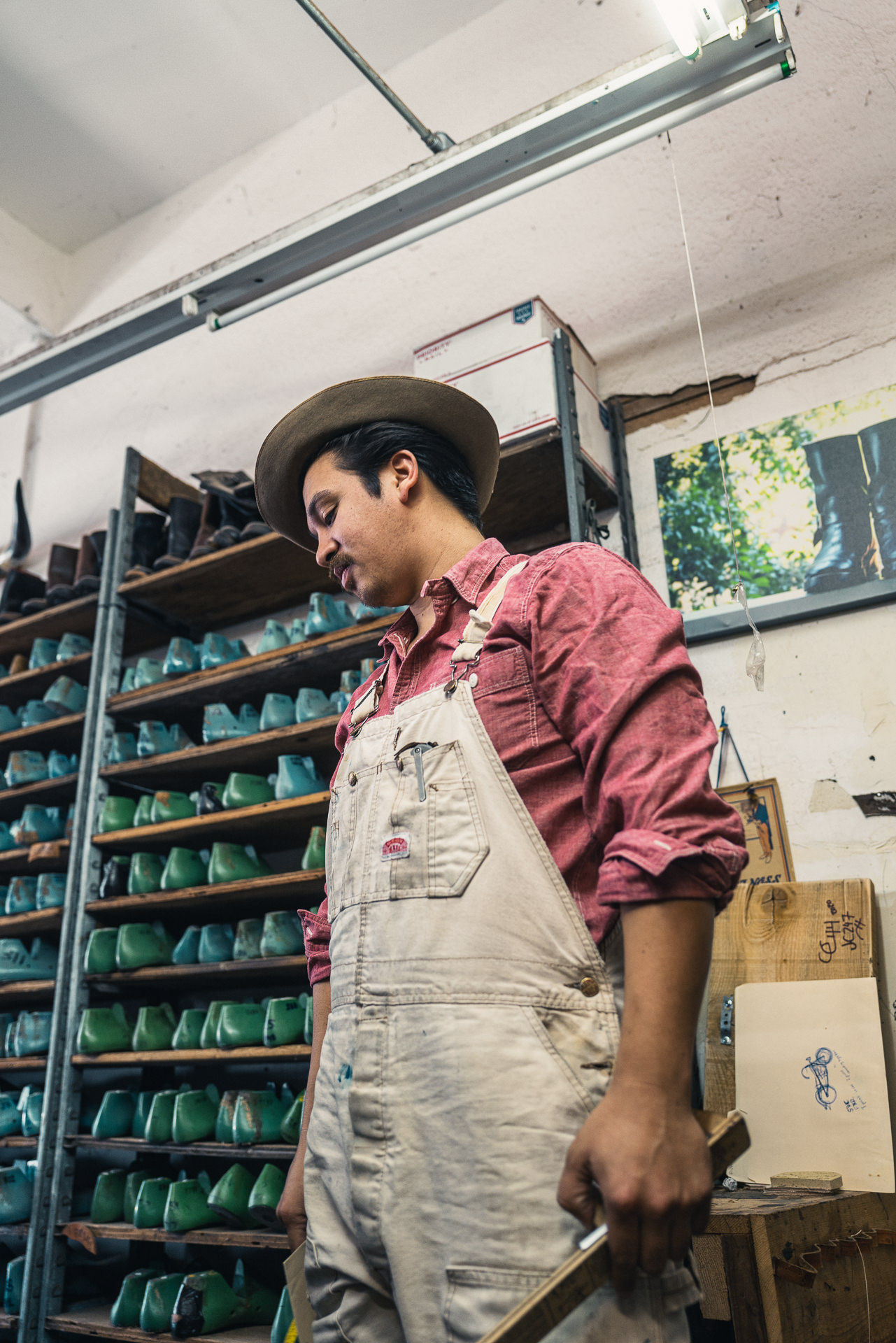
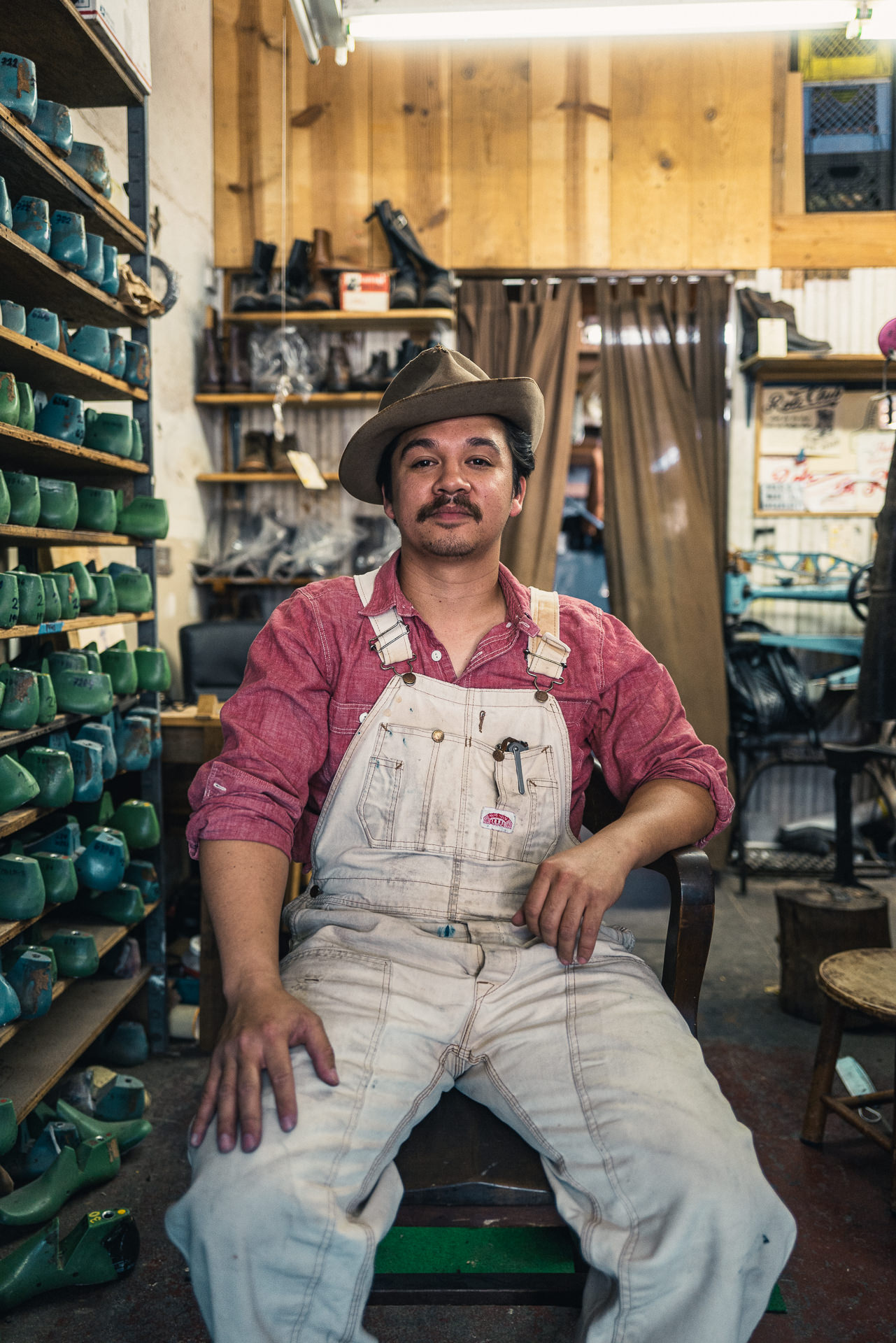
Whether it’s tailoring bespoke suits, tattooing, or crafting a pair of engineer boots the traditional way, certain skills can only be learned with the kind of depth that truly preserves their fundamentals via apprenticeships – by working alongside lifer craftsmen. For Truong, the work isn’t just about the perfection of his designs, the quality of the materials, or the artful way a pair of his boot ages, it’s about his relationship with his mentor, master bootmaker Ignacio “Nacho” Palacios — a man that’s been making boots since he was 8 years old. Palacios is the kind of lifer craftsman that made their living before the social media age, toiling away in the shadows of shops like the East LA location Truong works in without any fanfare, well-before workwear or combat boots were considered legitimate fashion. For Truong, the reward in Role Club’s success is in preserving Nacho’s life’s work and proving to the world that making boots can truly be considered an art form.
In the following interview, Brian the Bootmaker discusses everything from his background in the boot business to the enduring relevance of classic styles, to his relationship with his beloved mentor, to what’s next for Role Club.
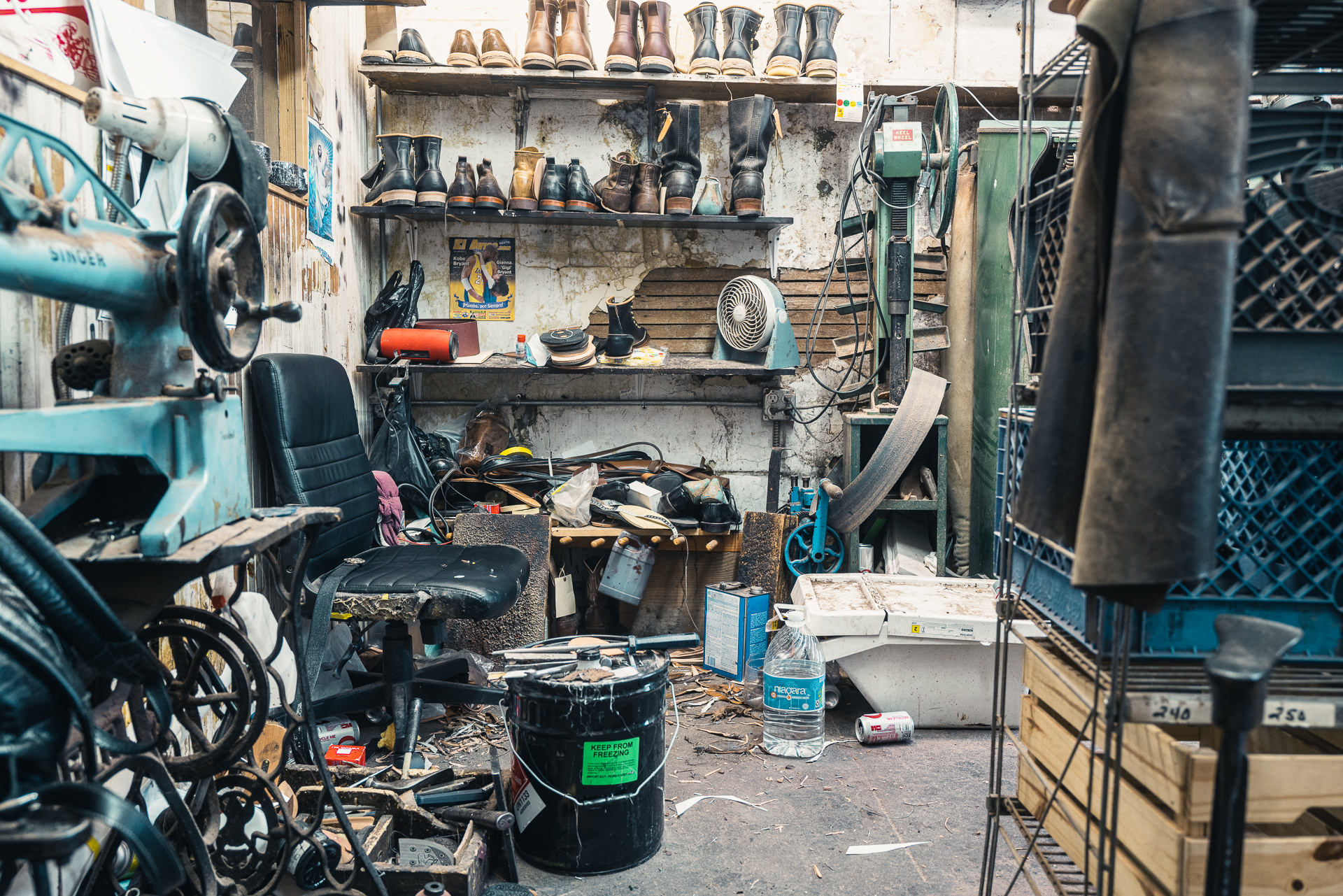
Can you give us a bit of your background and how you initially got into boot making?
BT: It all started when I met my teacher, Ignacio Palacios; we call him Nacho and he’s been a bootmaker since he was 8 years old and meeting him really inspired me. At that time, he was working on a lot of vintage, heritage-type boots and doing a lot of repairs. So I fell in love with the world of vintage boots from the ‘40s and the ‘50s through him. He was working on a lot of engineer boots and I actually learned what an engineer boot was through him. I would repair a lot of jump boots/paratrooper boots, so that’s how I really got in touch with my appreciation for classic, Americana-type boots.
So you sought out Ignacio with the intention of gaining an apprenticeship?
BT: Well, the first day I stepped into the shoe repair shop that I work at now, he was in the back working and I was just looking for some materials. I met Ignacio and I immediately just wanted to be in his world because I saw what he was doing as a really beautiful art form. I asked him if I could come and watch him work and that’s how it all started; he was like “come by every Sunday.” I’d come watch him work on old boots and we quickly became good friends.
That friendship helped us both grow a lot. At that time in his life, he was alone. All of his family was in Mexico and his son had just gone back to Mexico and he was by himself. I think he just needed a friend at the time and I don’t think he expected a friend like me, so I introduced him to my world. I took him to all of my favorite spots to eat and we would hang out a lot. I’d give him new ideas about what I wanted to do with boots and I brought him into a world he never really knew existed. He’s a very humble man and he didn’t realize what he taught me was so valuable. He looked at bootmaking and repairs as just a daily task. It was work. I think I helped him grow by showing him that what he does is art and more than just a job. And I made them realize that there are people who really appreciate what he does and that working with your hands on the level he does is rare. I did my best to help him value himself more.
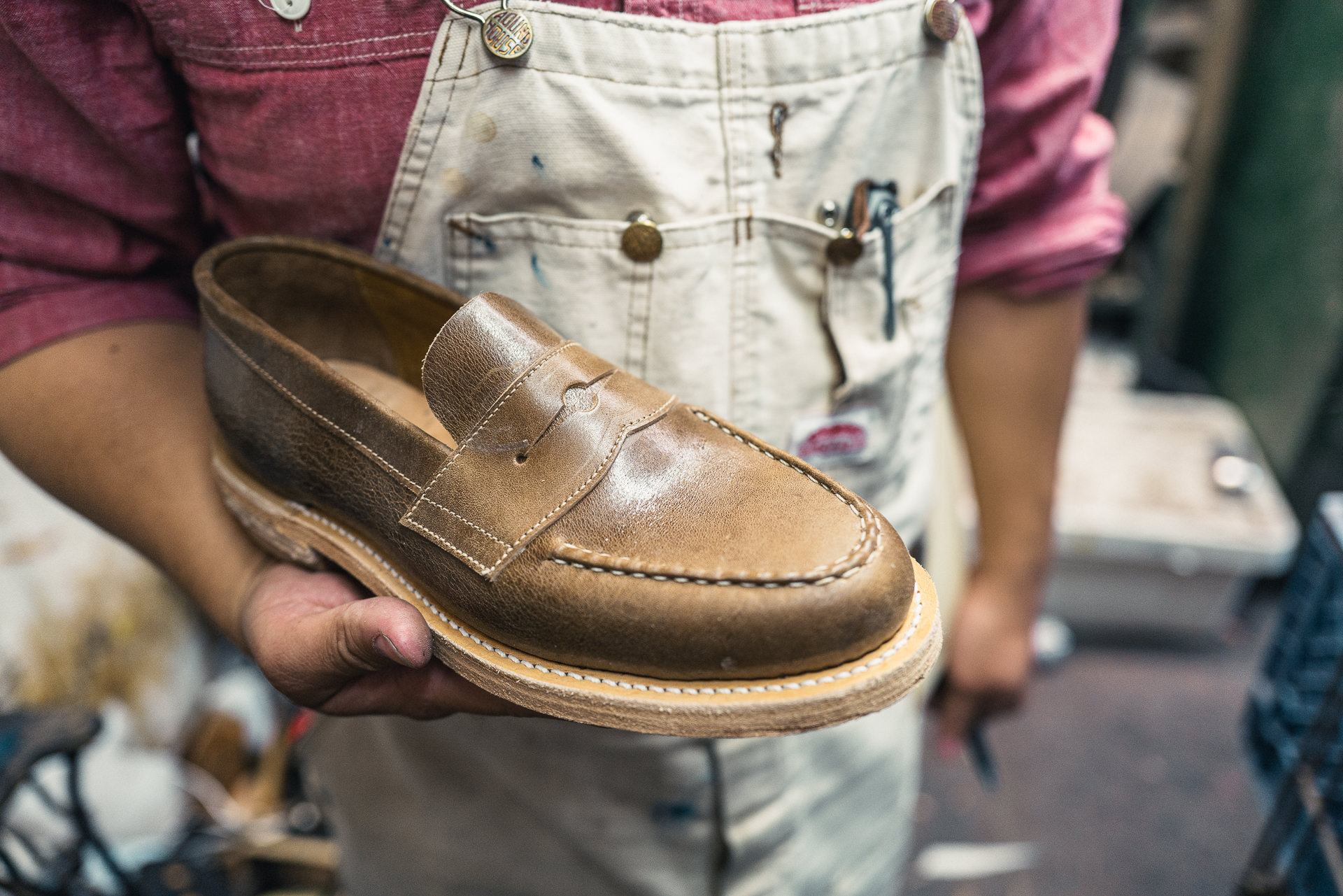
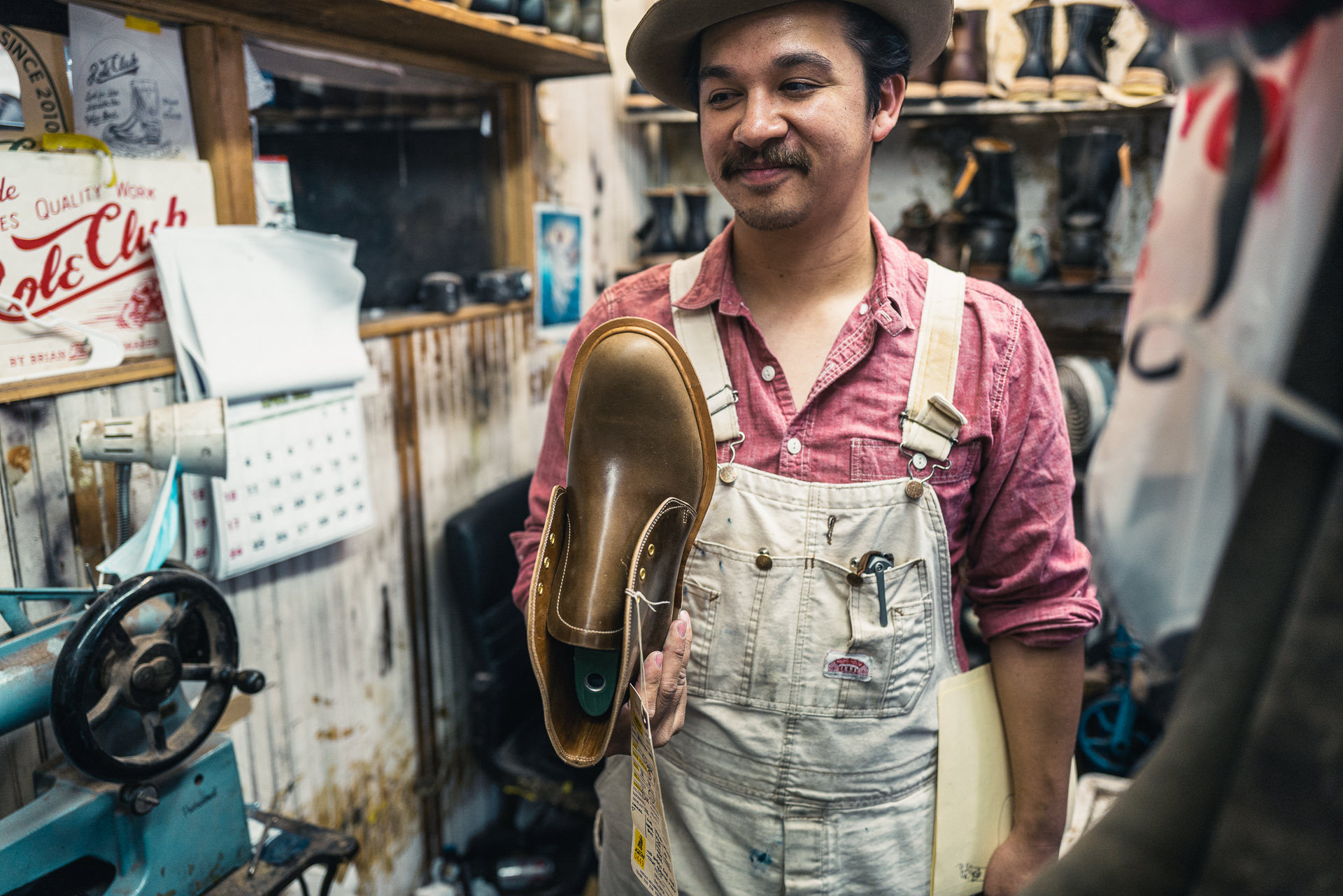
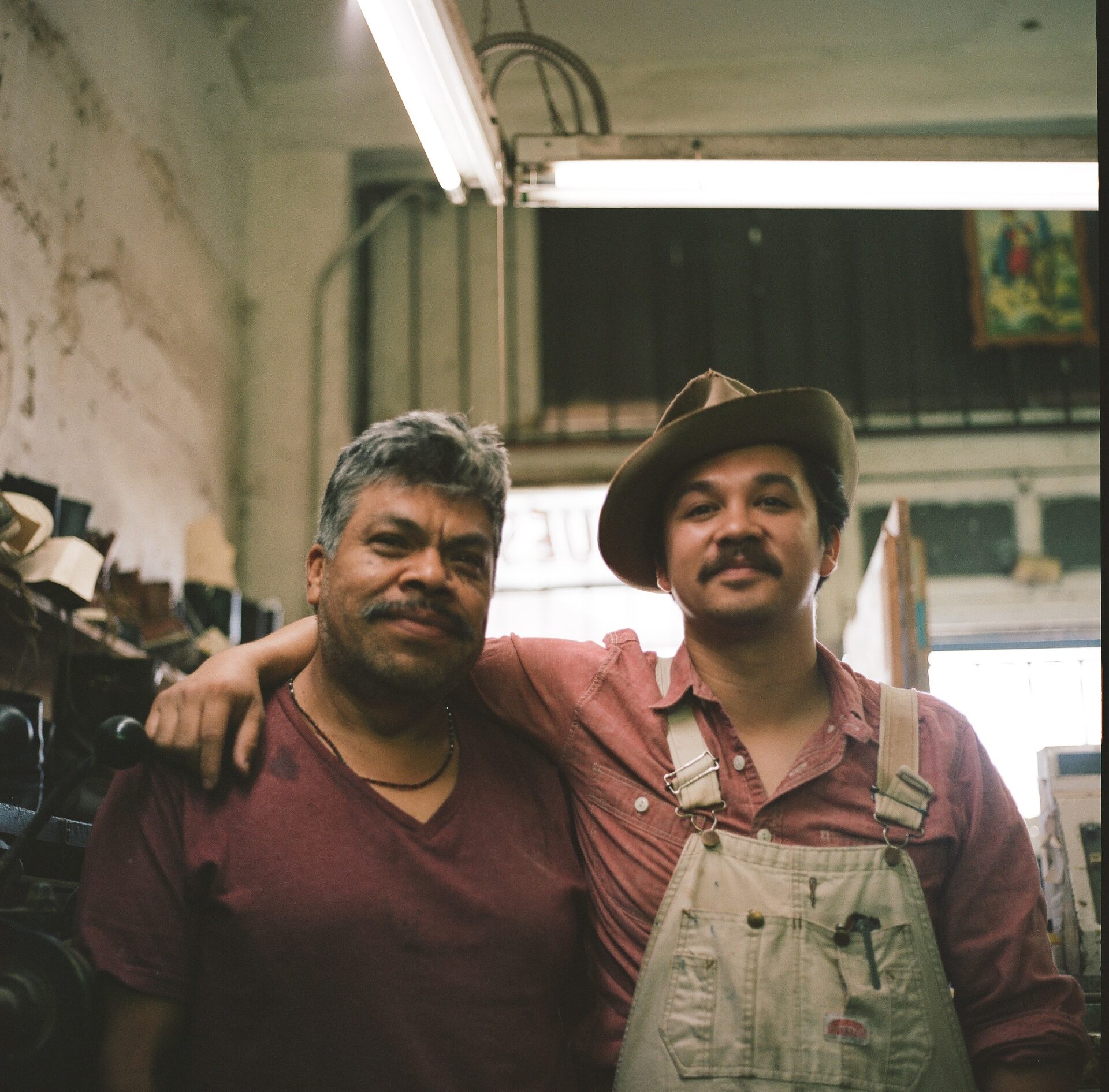
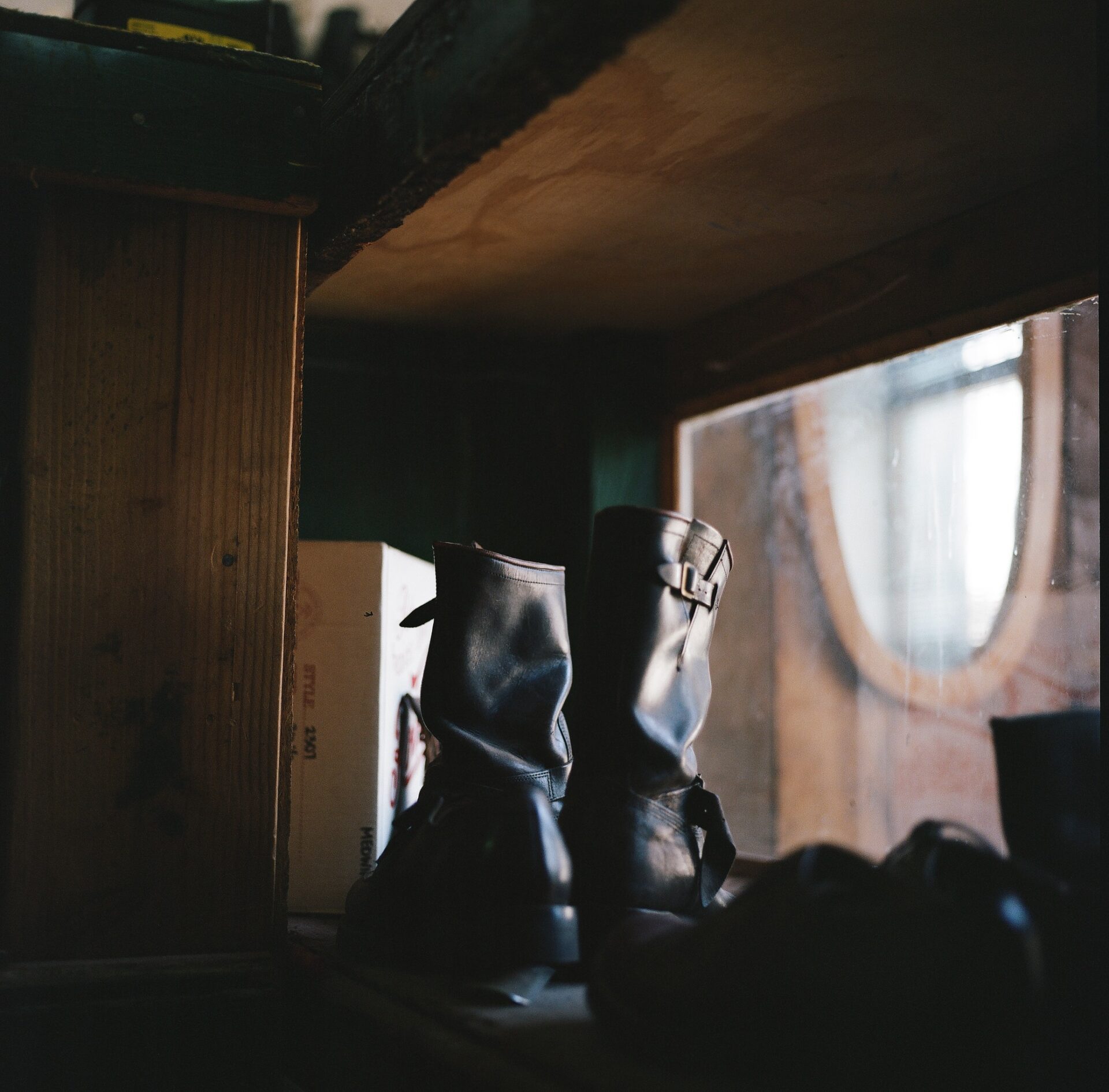
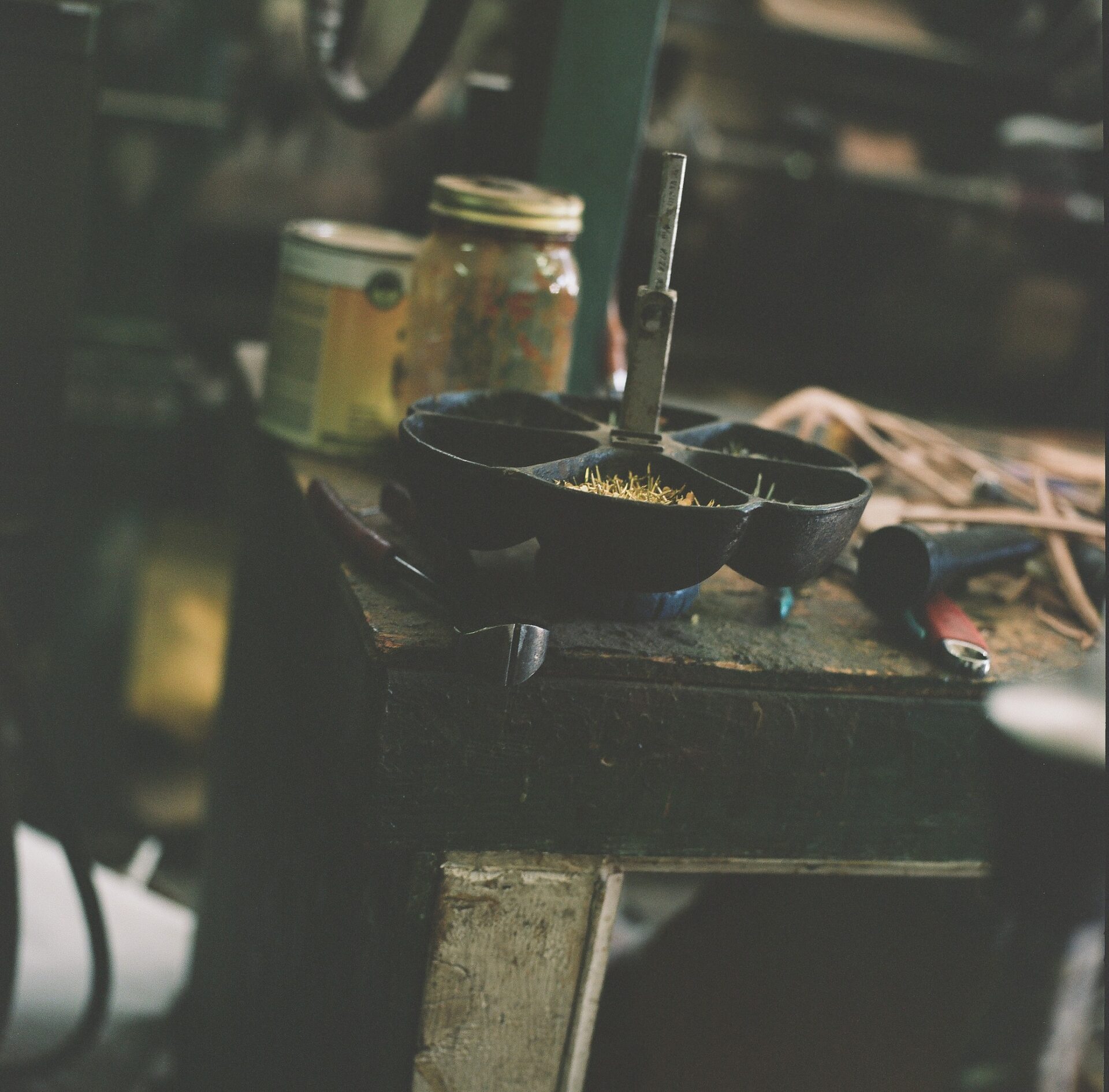
When it comes to the style of boots you make, whether it’s the engineer boot or a pair of Underdogs, they’re all rooted in designs from the ‘40s and ‘50s. What is it about that era of boot and style that you find so relevant today?
BT: You know, we always go back to the classic designs. That’s with anything in the world – art, denim. It all ends up back where it originally started I think. I’m intrigued by where everything comes from and the stories behind designs and I was really into sneakers. So for example, the Nike Blazer was actually inspired by a monkey boot and the Air Force 1 came from a dress shoe and those are the little things I always found interesting. When it comes to the ‘40s and ‘50s, I really appreciate that era in general; I just appreciate the Art Deco stuff, which is so simple and refined. I love the slogans and the way brands would play on words, and I really appreciate workwear from then. To be honest, I’m not sure why I’m so intrigued, but I just like the simple designs that can last forever because of their simplicity. I feel people gravitate towards Role Club because I keep it simple, but it’s my own take on the classics. It’s not too much of a twist, just enough to make it my own. That’s my philosophy behind Role Club: Just change it a little bit.
If I was somebody off the street and I wanted to order a pair of custom boots from you, how long would it take me from measurement to getting the boots right now?
BT: Right now, it’s about a two year wait for a pair of bespoke boots.
That’s an easily scaled business and you could just put the Role Club name on any pair of boots and hire other people. At the same time, that completely defeats the purpose of what you’re doing. I think your customers tend to understand that right?
BT: Yeah, definitely. My customers are very patient and they just appreciate quality. They’re okay with waiting. I believe our respective customers are the same type of people that get that quality takes time. Yes, I could put the Role Club name on boots made by other people and grow the size of the business, but I don’t really care about that. I care more about the art of it and keeping it classy in that sense, you know?
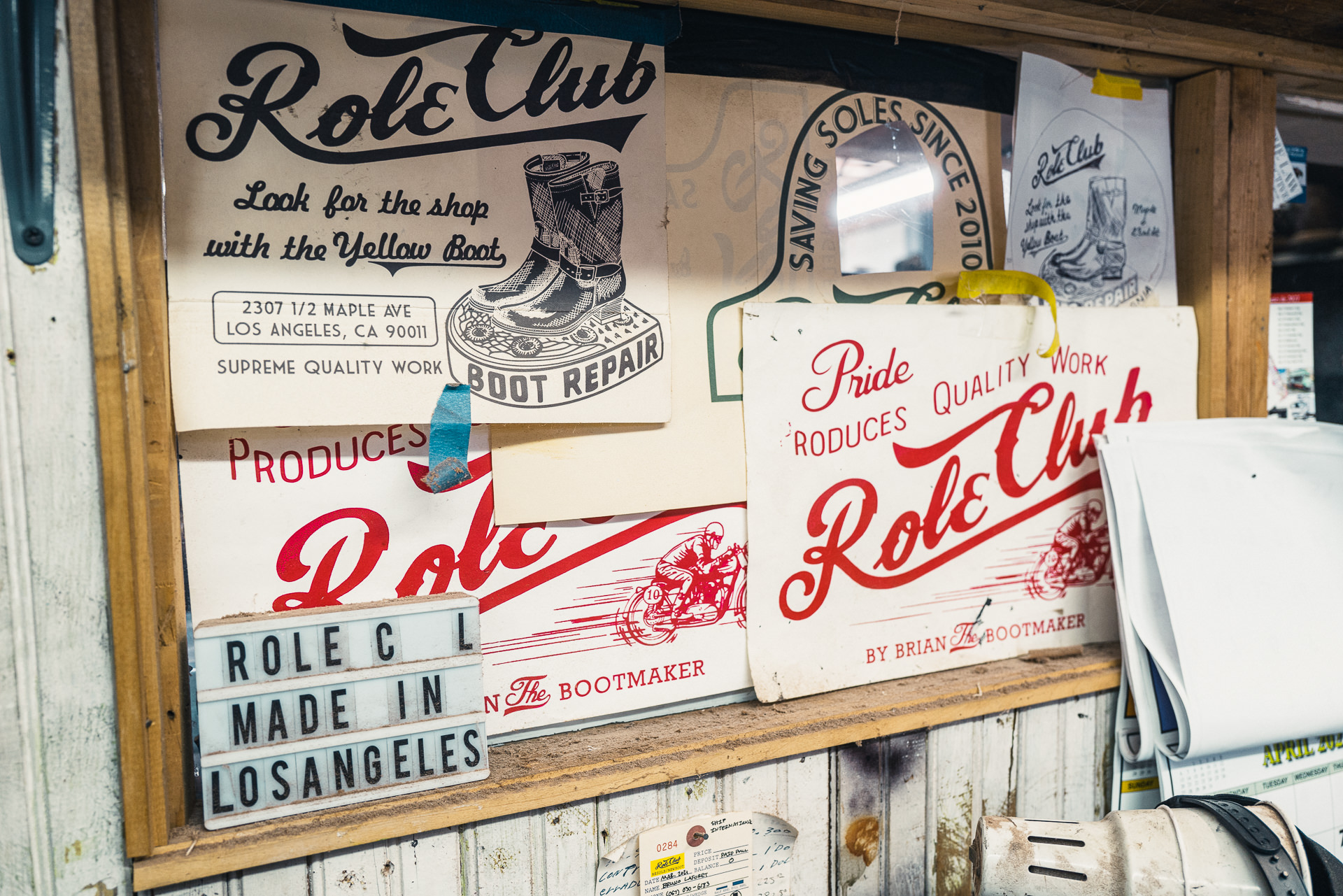


I think both C + T’s clientele and your customers respect that these are things we wear daily and that there’s a very strong possibility that the watches we deal in are going to outlive their current owners, and that many of them have already outlived past owners. I’m sure the same could be said for your boots, if cared for properly. I also think I could show your boots to most watch collectors and very easily explain why they’re so unique and worth waiting for and the price of admission.
BT: Honestly, most of my customers wear a Rolex or another classic style or vintage watch. I saw a customer wear a Tudor recently.
Another parallel is that many important watches were designed to be tools and an integral part of someone’s kit for a job, the same way the boots that inspired your line were a necessary part of someone’s kit. You couldn’t do a lot of people’s jobs in the ‘40s without them. At the same time, both of these categories have been elevated and become a luxury item for a lot of people. How do you feel about it kind of going from being workwear and something made for blue collar folks to something elevated?
BT: Oh, I love it. I love mixing things together and juxtaposition, and how it used to be truly workwear, but now it’s fashion. I think it’s awesome and I love how people get creative and mix workwear up, even making chore jackets into suits and stuff like that. It’s fantastic.
You’ve been making boots for over 12 years now. How has your work changed over those years? I’m sure how have you changed as a person in that time?
BT: To be honest, the process hasn’t changed much at all. I still hand-cut the leather, I still welt by hand. As a craftsman, I’m still doing it the same way. I just continue growing when it comes to my designs.
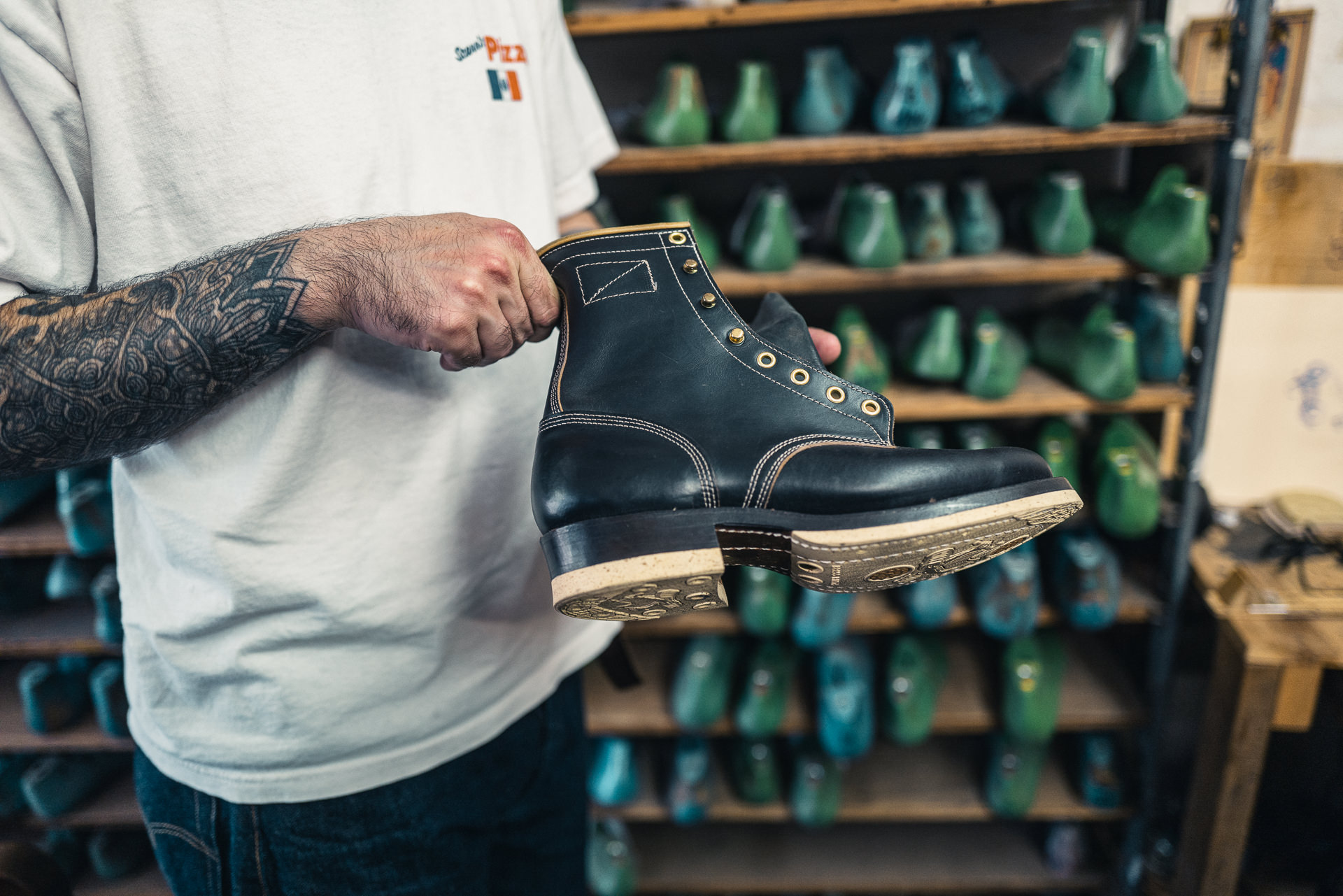
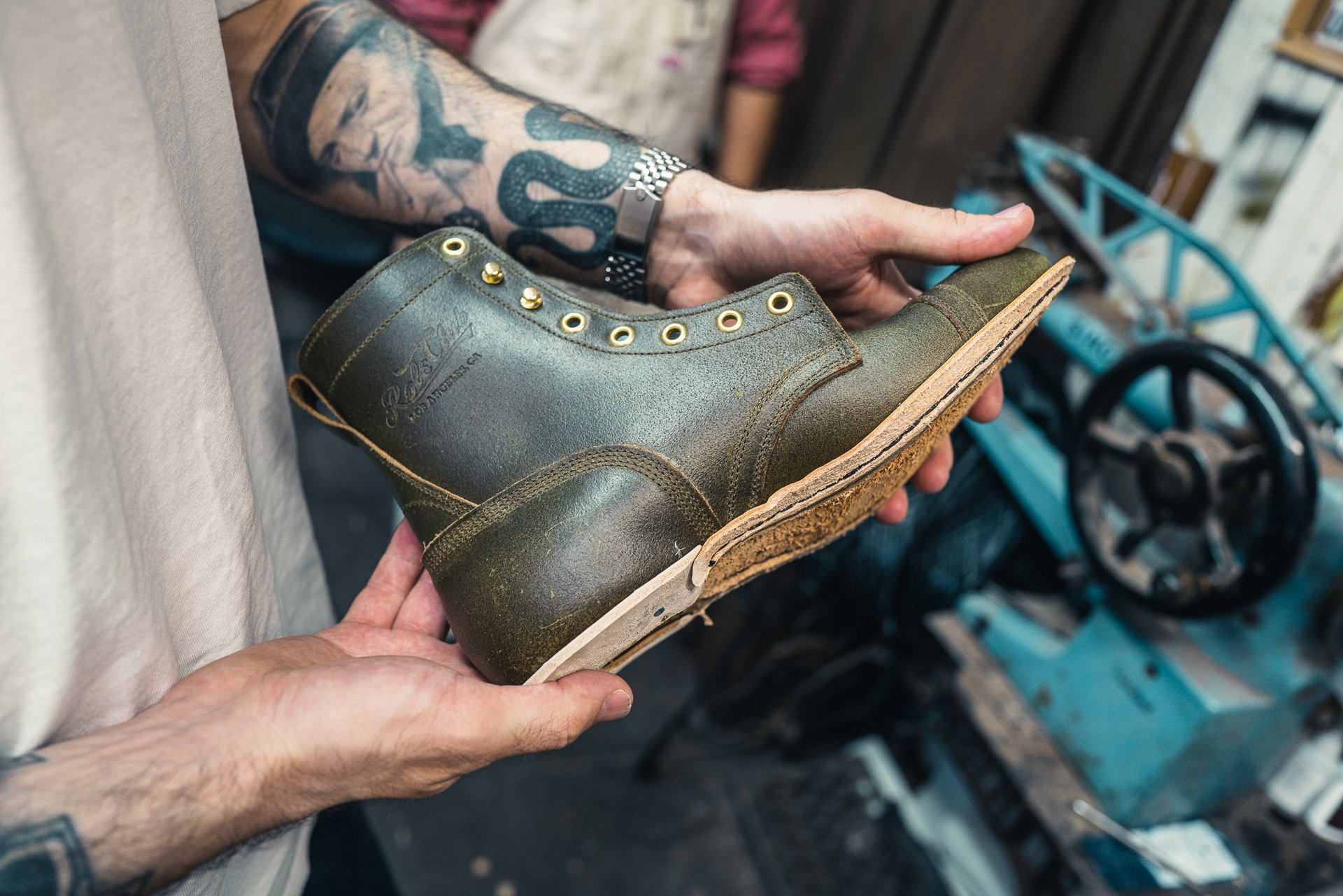
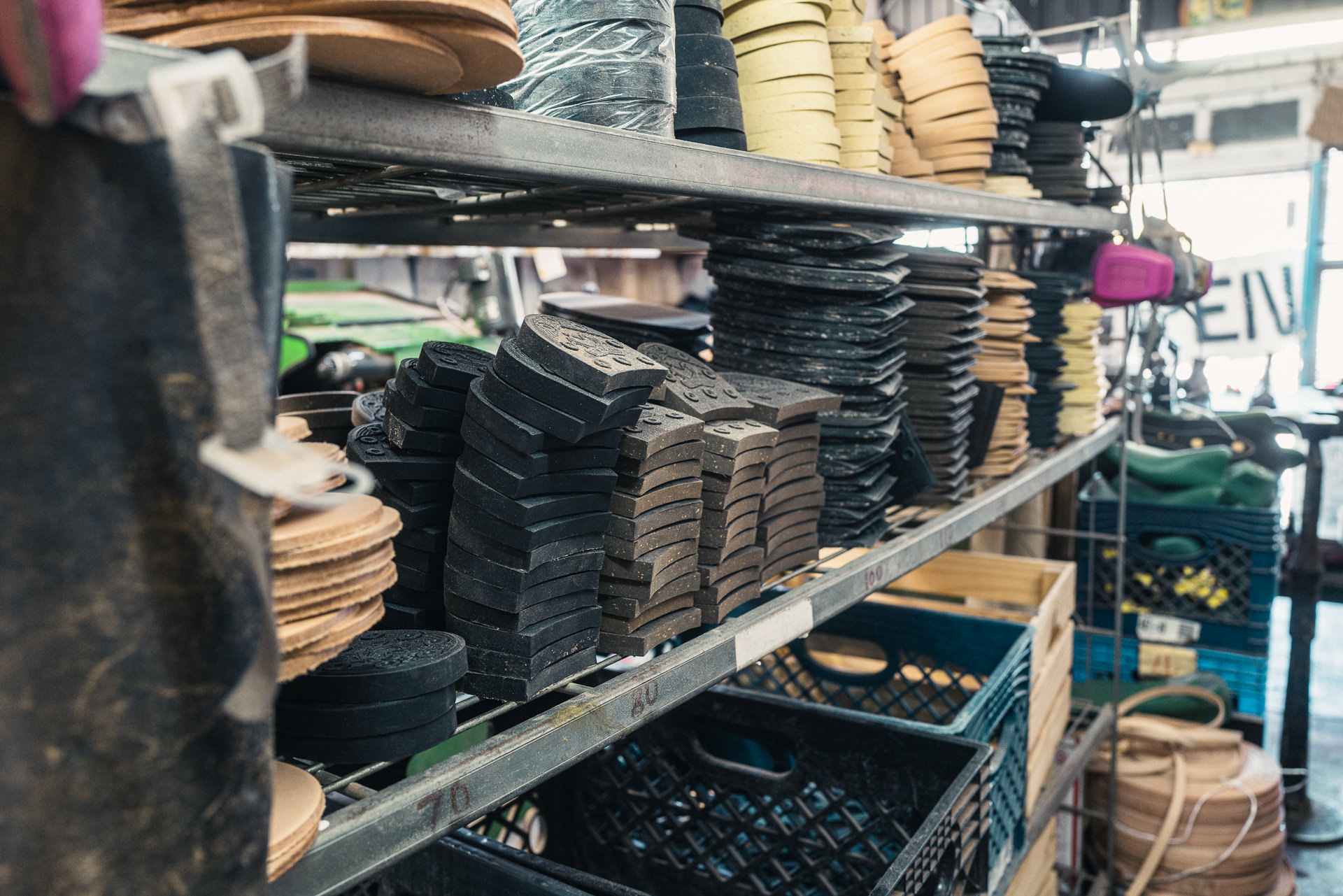
You obviously obsess over the work and that’s a common thread with a lot of the people we interview that make remarkable things.
BT: I am definitely obsessive with my work. I pay attention to so many things that I’m sure to most, it doesn’t really matter, but to me, it does. For example, I worry about the stitches-per-inch on a boot. I worry about the whole profile of a boot and how the counter connects to the vamp and it just goes on and on. The sanding is huge for me and a boot needs to be perfectly sanded so there are no scratches on the heel. Maybe one thing that I did change, now that I think about it, is that I came to the conclusion that my boots will never be perfect. Before, I would reach for perfection and try to make it as perfect as possible, but I was always disappointed because it never came out quite how I envisioned perfection. However, for my customers – even those that really know boots – they’ll think a pair of boots is perfect. I came to the conclusion that it will never be exactly what I want, but then again, that’s what makes a handmade boot even more special. I realized that those imperfections are the charisma behind the design. And that’s okay because it’s a handmade thing that’s not just cranked out in a day. I think when people see my boots, they notice that they look rich and have a personality of their own – If that makes sense?
Your customers love when a pair of boots get a patina to them and age. How do you feel when you get a pair of boots in for a resole that you made 10 years ago?
BT: Oh, I get excited. You know, it’s like meeting an old friend. I actually notice the growth in my technique now, so I think my work has improved over time. I can tell the different years my boots were made and it’s awesome to have a pair of boots come in and I’ll reminisce about my time making boots and those specific years.
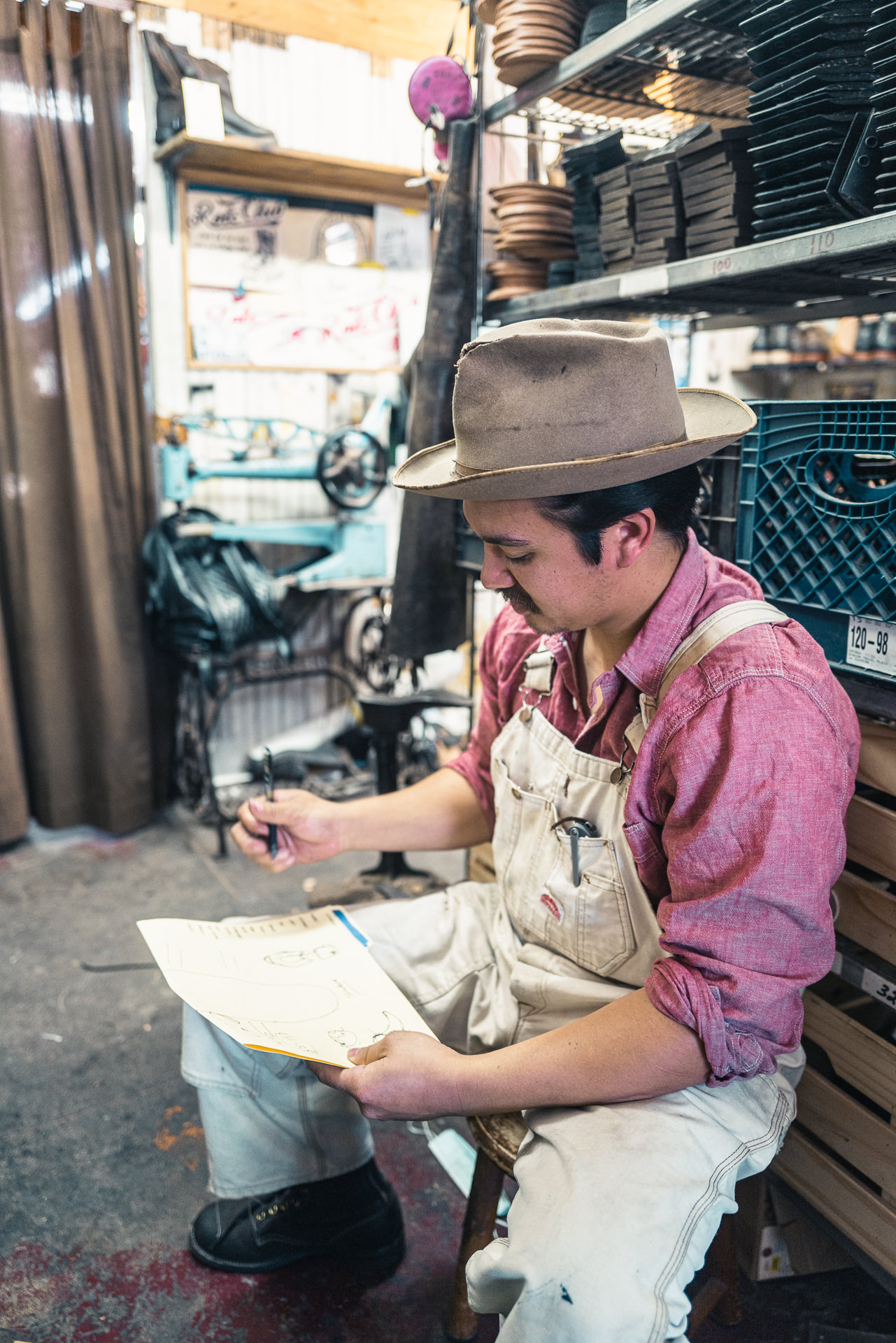
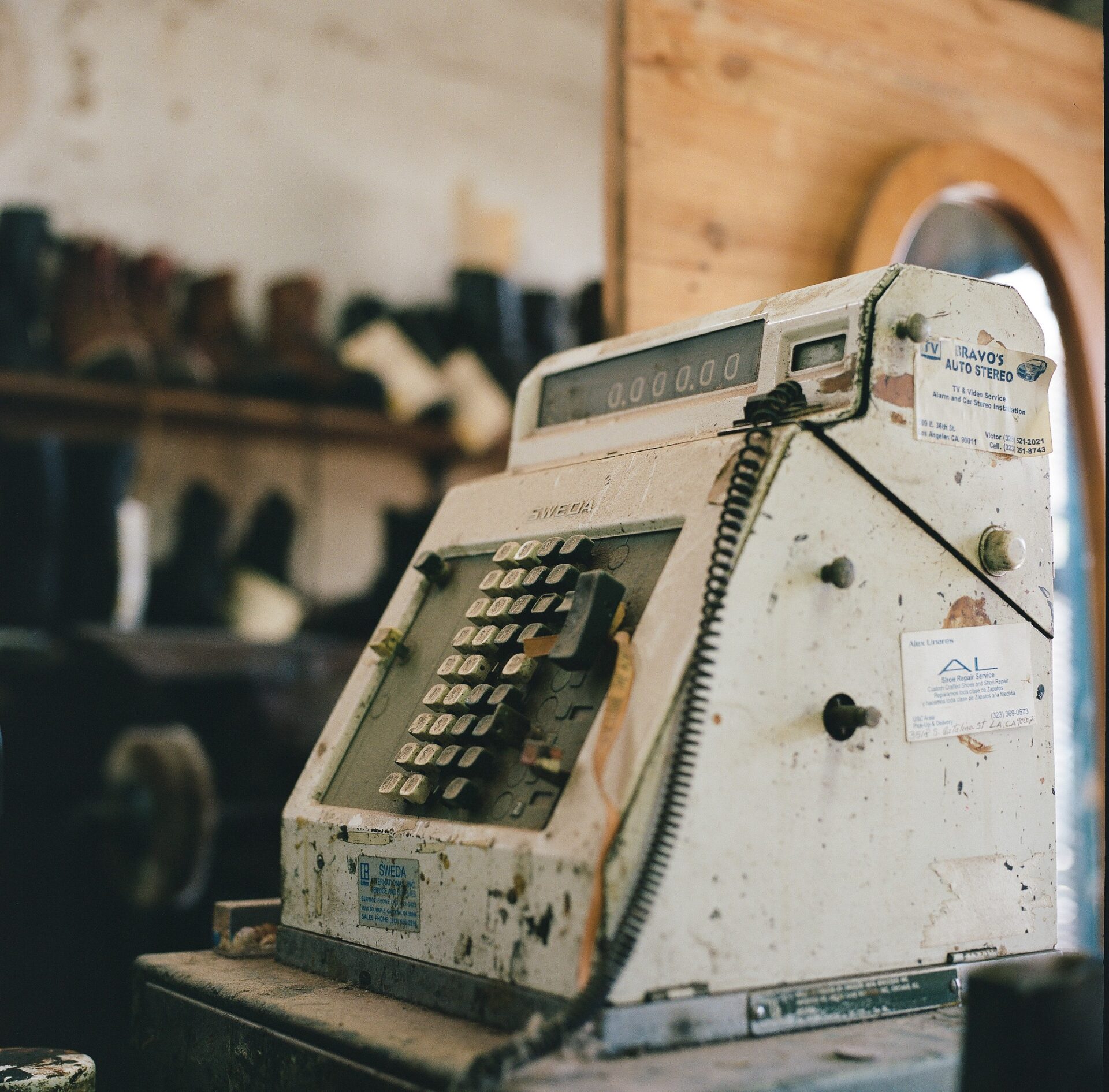
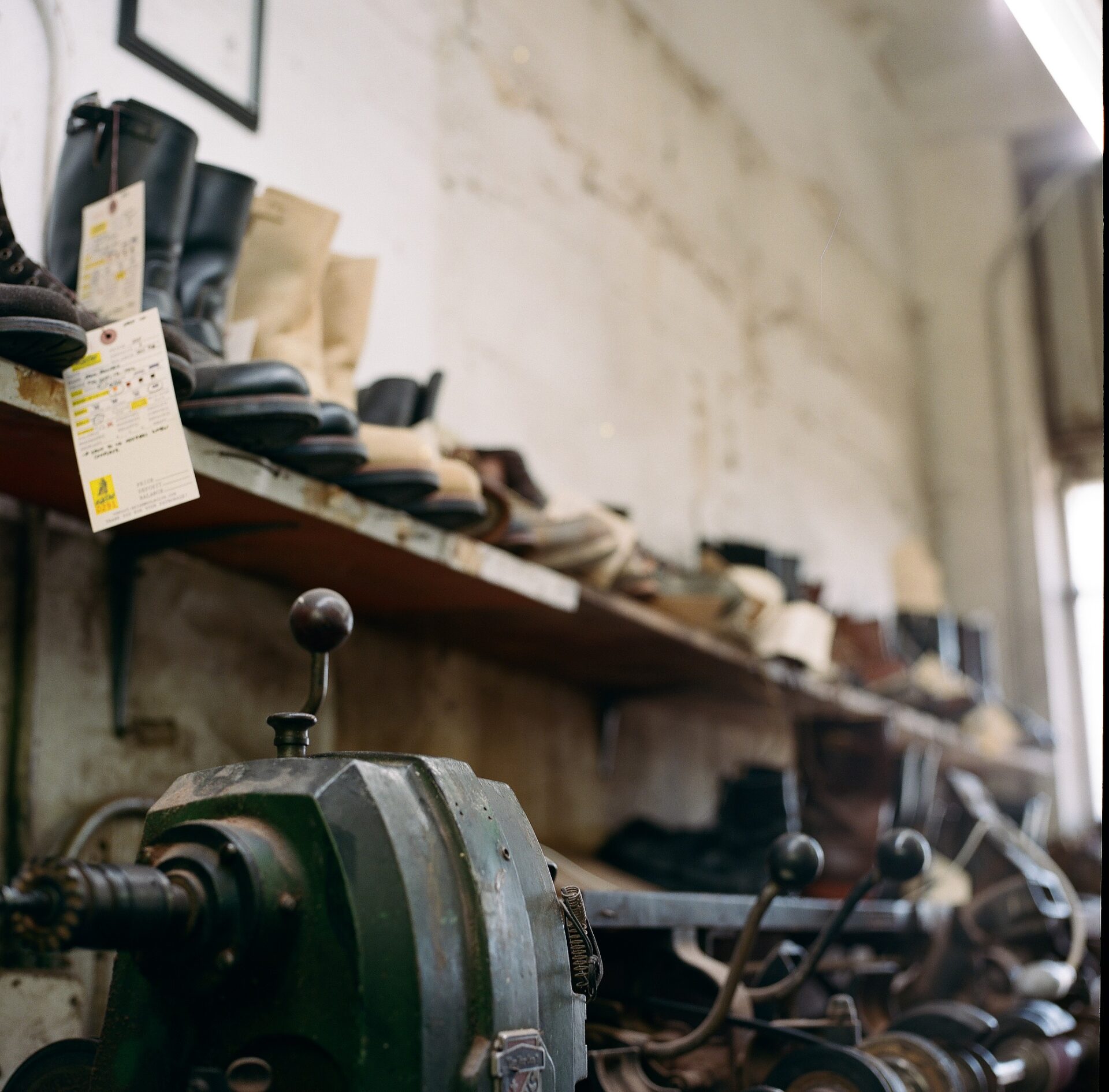

You work out of an old shop in East LA that your teacher Ignacio has worked out of for a long time.
BT: Yeah. Ignacio has been working here for around 25 years and the owner before me was here for around 30 years. I’m the fourth owner and this shop has always been a shoe repair shop.
What does it mean to you to be extending that legacy?
BT: For me, being the fourth owner of a shoe repair shop doesn’t mean much to me – it’s more what my teacher thinks that’s important to me. That’s where my pressure comes from. I learned the craft from Ignacio and he’s getting older and I just want to make him proud. I worry about that more than anything. He inspired me. That’s the most important part, you know? As a minority, it’s really hard for him to get the light shined on him and it’s important for me to show my respect for him when people ask about my work. As long as people know where I came from and that Ignacio taught me everything I know, that’s all that matters to me. I feel like the boots speak for themselves.
What do you see for the future of Role Club? Do you want to keep just doing what you’re doing forever the same way? A one-man show making each boot by hand one at a time?
BT: I would love to, but I think in the long term, it won’t work out because my body hurts more with each year. My hands hurt at night and I think maybe growth for me personally is learning to let go and have other people come in, maybe have an apprenticeship to grow with and allow this thing to live on. Maybe get a bigger shop and teach others.

Check out 'Reference Tracks' our Spotify playlist. We’ll take you through what’s been spinning on the black circle at the C + T offices.

Never miss a watch. Get push notifications for new items and content as well as exclusive access to app only product launches.
Sign up for our newsletter to receive updates and exclusive offers